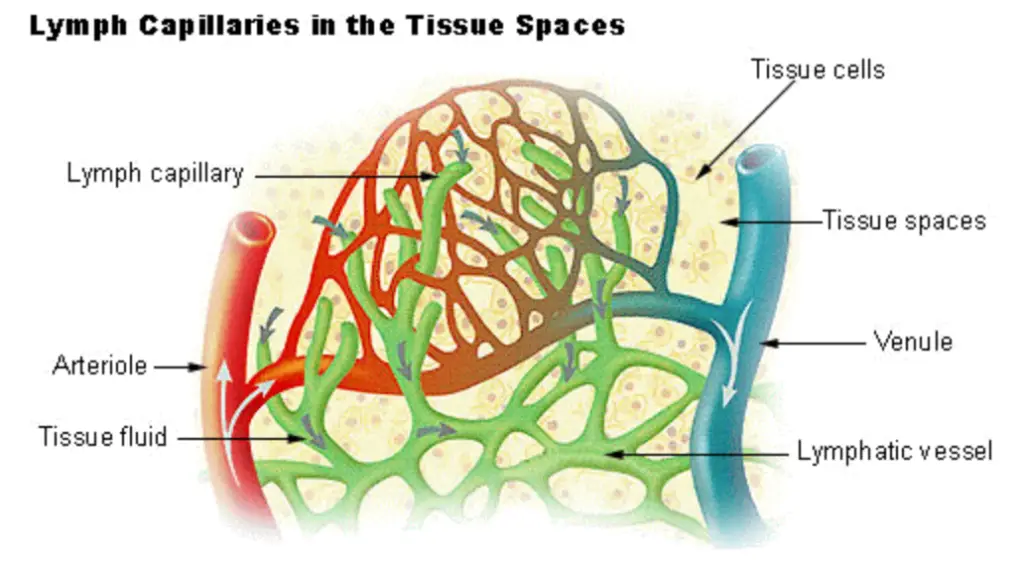Lymphatic vessels, commonly called lymphatics, are a crucial component of the lymphatic system, a network of tissues and organs responsible for maintaining fluid balance, filtering lymph, and supporting the immune system. Lymphatic vessels play a vital role in the circulation and transport of lymph throughout the body. Here’s a detailed note on lymphatic vessels:
1. Structure:
– Lymphatic vessels form a complex network that parallels the circulatory system’s blood vessels.
– These vessels are thin-walled and composed of a single layer of endothelial cells, which allows for the easy exchange of fluids and substances between the lymph and surrounding tissues.

2. Functions:
Lymph Transport
The primary function of lymphatic vessels is to transport lymph, a clear fluid that originates from tissue fluid (interstitial fluid) and carries white blood cells, waste products, and cellular debris.
Fluid Balance: Lymphatic vessels help regulate the fluid balance in the body by collecting excess interstitial fluid that has leaked from blood vessels and returning it to the bloodstream. This prevents tissue swelling (edema) and helps maintain blood pressure.
Immune Function: Lymphatic vessels play a vital role in the immune response. They transport immune cells, such as lymphocytes and antigen-presenting cells, to lymph nodes and other lymphatic organs. This enables the immune system to detect and combat infections, pathogens, and abnormal cells.
Fat Absorption: In the small intestine, specialized lymphatic vessels called lacteals absorb dietary fats and fat-soluble vitamins. These fats are transported within chylomicrons, particles that enter the lymphatic system before eventually reaching the bloodstream.
Waste Removal: Lymphatic vessels collect cellular waste products, such as damaged or aged cells, and carry them to lymph nodes and other organs for processing and elimination.
3. Lymph Nodes:
– Lymphatic vessels transport lymph to lymph nodes, which are small, bean-shaped structures throughout the body.
– Lymph nodes actively characterize as filtering stations where they examine lymph for pathogens and cellular debris, and initiate immune responses if necessary.
– Lymph nodes contain white blood cells, such as lymphocytes and macrophages, which play a key role in the body’s defense against infections.
4. Direction of Flow:
– Lymphatic vessels have one-way valves that ensure the unidirectional flow of lymph. This prevents backflow and aids in the movement of lymph against gravity.
5. Relationship with Blood Vessels:
– While the lymphatic and circulatory systems are separate, they are closely connected. Lymphatic vessels return lymph to the bloodstream, and the circulatory system provides nutrients to the lymphatic system.
6. Role in Disease and Health:
– Lymphatic vessels are critical in cancer metastasis, as cancer cells can enter the lymphatic system and spread to distant parts of the body via lymph nodes.
– The lymphatic system’s role in immune responses is fundamental to health, as it helps the body defend against infections and diseases.


